Homegrown Eggplants Pot Method: Imagine biting into a juicy, perfectly ripe eggplant, bursting with flavor, knowing you nurtured it from a tiny seedling right on your own patio. Sounds dreamy, right? Well, it doesn’t have to be just a dream! For centuries, gardeners have cultivated eggplants, tracing their origins back to ancient India and Asia, where they were prized for both their culinary and medicinal properties. Now, you too can join this tradition, even without a sprawling garden.
Many people shy away from growing eggplants, thinking they require vast amounts of space and expert gardening skills. But what if I told you there’s a simple, effective way to enjoy fresh, homegrown eggplants, even if you only have a balcony or a small sunny spot? That’s where the homegrown eggplants pot method comes in! This DIY guide will unlock the secrets to successfully growing these delicious vegetables in containers, offering a practical solution for urban gardeners and anyone with limited space.
I’m going to share my favorite tips and tricks, from choosing the right pot size and soil to providing optimal sunlight and watering. You’ll learn how to avoid common pitfalls and ensure a bountiful harvest. Get ready to transform your outdoor space into a mini-eggplant paradise and savor the unmatched taste of homegrown goodness!
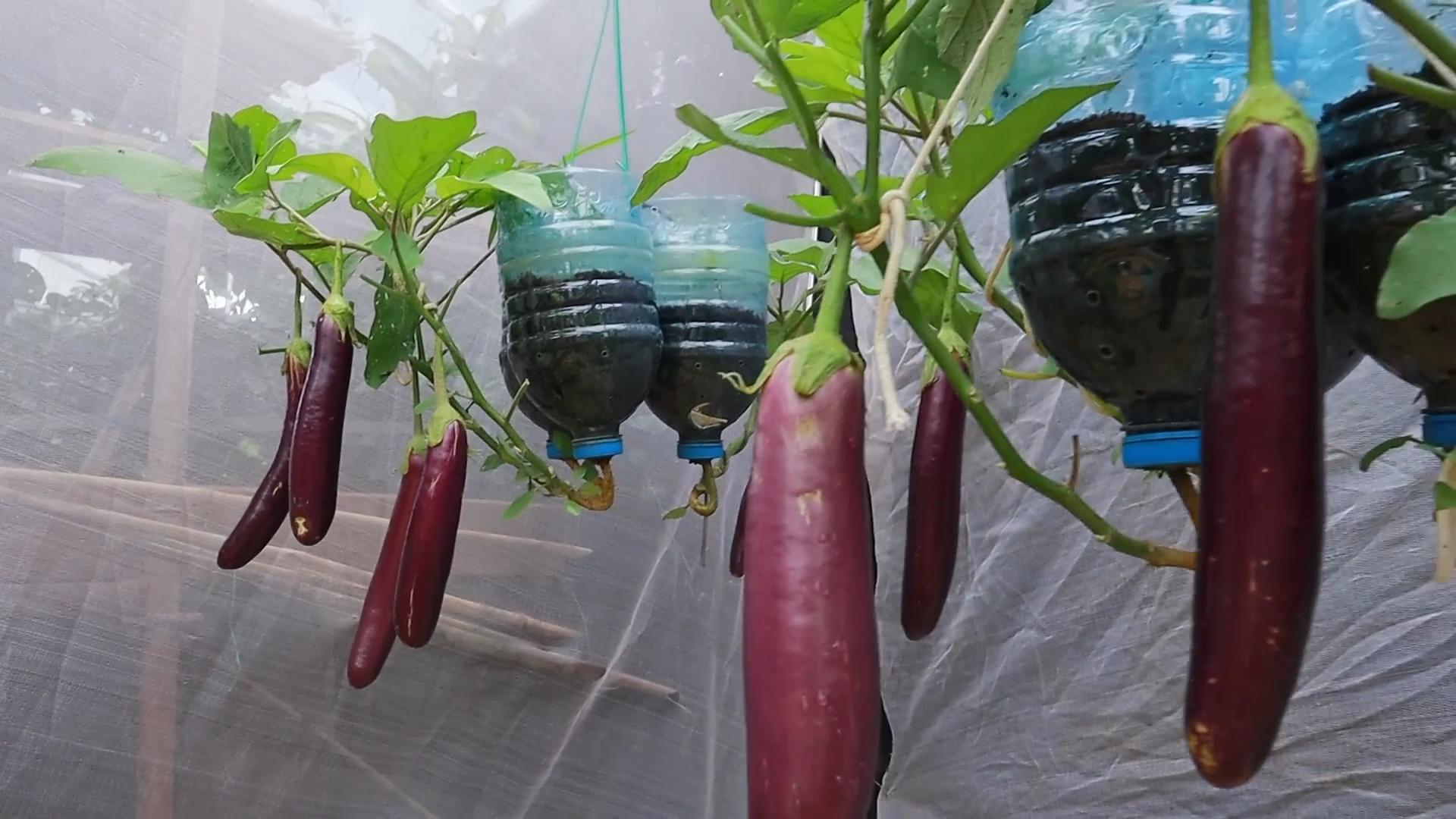
Growing Eggplants in Pots: A Beginner’s Guide to Bountiful Harvests
Hey there, fellow gardening enthusiasts! I’m super excited to share my tried-and-true method for growing eggplants in pots. Trust me, even if you’re short on space or just starting out, you can absolutely enjoy fresh, homegrown eggplants. I’ve had amazing success with this method, and I’m confident you will too. Let’s dive in!
Choosing the Right Eggplant Variety
First things first, not all eggplants are created equal, especially when it comes to container gardening. You’ll want to select a variety that’s known for its compact size and productivity in pots. Here are a few of my personal favorites:
* Patio Baby: This one is a winner! It produces tons of small, delicious eggplants on a relatively small plant. Perfect for smaller pots.
* Fairy Tale: These are so pretty and tasty! They have beautiful striped fruit and are quite prolific.
* Little Fingers: As the name suggests, these produce slender, finger-like eggplants that are great for grilling or stir-fries.
* Ichiban: A classic Japanese eggplant that does well in containers, producing long, slender, dark purple fruit.
Gathering Your Supplies
Okay, now let’s get our hands dirty! Here’s what you’ll need to get started:
* Eggplant seeds or seedlings: If you’re starting from seed, you’ll need to start them indoors about 8-10 weeks before the last expected frost. Seedlings are a great option if you want a head start.
* Large pots: I recommend pots that are at least 14-16 inches in diameter and depth. Eggplants need plenty of room for their roots to grow. Make sure the pots have drainage holes!
* High-quality potting mix: Don’t skimp on this! Use a well-draining potting mix specifically formulated for containers. Avoid using garden soil, as it can become compacted and doesn’t drain well.
* Slow-release fertilizer: This will provide your eggplants with a steady supply of nutrients throughout the growing season.
* Watering can or hose: Essential for keeping your plants hydrated.
* Gardening gloves: To protect your hands.
* Optional: Stakes or cages for support, especially for larger varieties.
* Optional: Mulch (straw, wood chips, or shredded bark) to help retain moisture and suppress weeds.
Step-by-Step Planting Guide
Alright, let’s get planting! Follow these steps for a successful start:
1. Prepare your pots: Fill your pots with the high-quality potting mix, leaving about an inch or two of space at the top.
2. Plant your seedlings (or sow seeds): If you’re using seedlings, gently remove them from their containers and loosen the roots slightly. Dig a hole in the potting mix that’s large enough to accommodate the root ball. Place the seedling in the hole and backfill with potting mix, gently firming the soil around the base of the plant. If you’re sowing seeds, follow the instructions on the seed packet for planting depth and spacing. I usually plant 2-3 seeds per pot and then thin them out to the strongest seedling once they’ve sprouted.
3. Water thoroughly: After planting, water your eggplants thoroughly until water drains out of the drainage holes. This will help settle the soil and ensure that the roots are well-hydrated.
4. Add slow-release fertilizer: Sprinkle the slow-release fertilizer around the base of the plant, following the instructions on the fertilizer package. Gently mix it into the top layer of soil.
5. Mulch (optional): If you’re using mulch, spread a layer of mulch around the base of the plant, being careful not to pile it up against the stem. This will help retain moisture, suppress weeds, and regulate soil temperature.
6. Provide support (optional): If you’re growing a larger variety of eggplant, you may want to provide support with stakes or cages. Insert the stakes or cages into the pot before the plant gets too large, being careful not to damage the roots.
Caring for Your Eggplants
Now that your eggplants are planted, it’s time to provide them with the care they need to thrive. Here’s what you need to know:
* Sunlight: Eggplants need at least 6-8 hours of sunlight per day. Place your pots in a sunny location where they’ll receive plenty of direct sunlight. If you don’t have a sunny spot, you can supplement with grow lights.
* Watering: Water your eggplants regularly, especially during hot, dry weather. The soil should be consistently moist, but not soggy. Check the soil moisture by sticking your finger into the soil. If the top inch of soil feels dry, it’s time to water. Avoid overwatering, as this can lead to root rot. I usually water deeply every 2-3 days, depending on the weather.
* Fertilizing: In addition to the slow-release fertilizer you added at planting, you may want to supplement with a liquid fertilizer every 2-3 weeks. Use a balanced fertilizer or one that’s specifically formulated for vegetables. Follow the instructions on the fertilizer package.
* Pruning: Pruning can help improve air circulation and encourage fruit production. Remove any yellowing or dead leaves. You can also pinch off the tips of the branches to encourage bushier growth.
* Pest and disease control: Keep an eye out for pests and diseases. Common pests that affect eggplants include aphids, flea beetles, and spider mites. You can control these pests with insecticidal soap or neem oil. Common diseases include fungal diseases like powdery mildew and blossom-end rot. You can prevent these diseases by providing good air circulation and avoiding overwatering. If you notice any signs of disease, treat the plants with a fungicide.
* Pollination: Eggplants are self-pollinating, but they benefit from a little help. You can hand-pollinate your eggplants by gently shaking the flowers or using a small paintbrush to transfer pollen from one flower to another. This is especially important if you’re growing your eggplants indoors or in a location with limited bee activity.
Harvesting Your Eggplants
The moment you’ve been waiting for! Harvesting your eggplants is the most rewarding part of the process. Here’s how to do it:
* Timing: Eggplants are typically ready to harvest about 60-80 days after transplanting. The exact timing will depend on the variety and growing conditions. Look for eggplants that are firm, glossy, and have a deep, rich color. The skin should be smooth and unblemished.
* Technique: Use a sharp knife or pruning shears to cut the eggplant from the plant, leaving about an inch of stem attached. Be careful not to damage the plant.
* Storage: Store your harvested eggplants in the refrigerator for up to a week.
Troubleshooting Common Problems
Even with the best care, you may encounter some problems along the way. Here are a few common issues and how to address them:
* Blossom-end rot: This is a common problem that causes the bottom of the eggplant to rot. It’s usually caused by a calcium deficiency. To prevent blossom-end rot, make sure your soil is well-drained and that you’re providing your plants with adequate calcium. You can add calcium to the soil by amending it with bone meal or crushed eggshells.
* Yellowing leaves: Yellowing leaves can be a sign of overwatering, underwatering, nutrient deficiency, or pest infestation. Check the soil moisture and adjust your watering accordingly. Fertilize your plants regularly with a balanced fertilizer. Inspect the plants for pests and treat them as needed.
* Lack of fruit: If your eggplants aren’t producing fruit, it could be due to a lack of sunlight, poor pollination, or nutrient deficiency. Make sure your plants are getting at least 6-8 hours of sunlight per day. Hand-pollinate your eggplants to ensure that they’re getting pollinated. Fertilize your plants regularly with a balanced fertilizer.
Enjoying Your Homegrown Eggplants
Congratulations! You’ve successfully grown eggplants in pots. Now it’s time to enjoy the fruits (or vegetables!) of your labor. There are so many delicious ways to prepare eggplants. Here are a few of my favorites:
* Grilled eggplant: Slice the eggplant into rounds, brush with olive oil, and grill until tender.
* Eggplant parmesan: Bread and bake eggplant slices, then layer them with tomato sauce and mozzarella cheese.
* Baba ghanoush: Roast an eggplant until soft, then blend it with tahini, lemon juice, garlic, and olive oil.
* Eggplant curry: Add diced eggplant to your favorite curry recipe.
* Stir-fries: Dice eggplant and add it to stir-
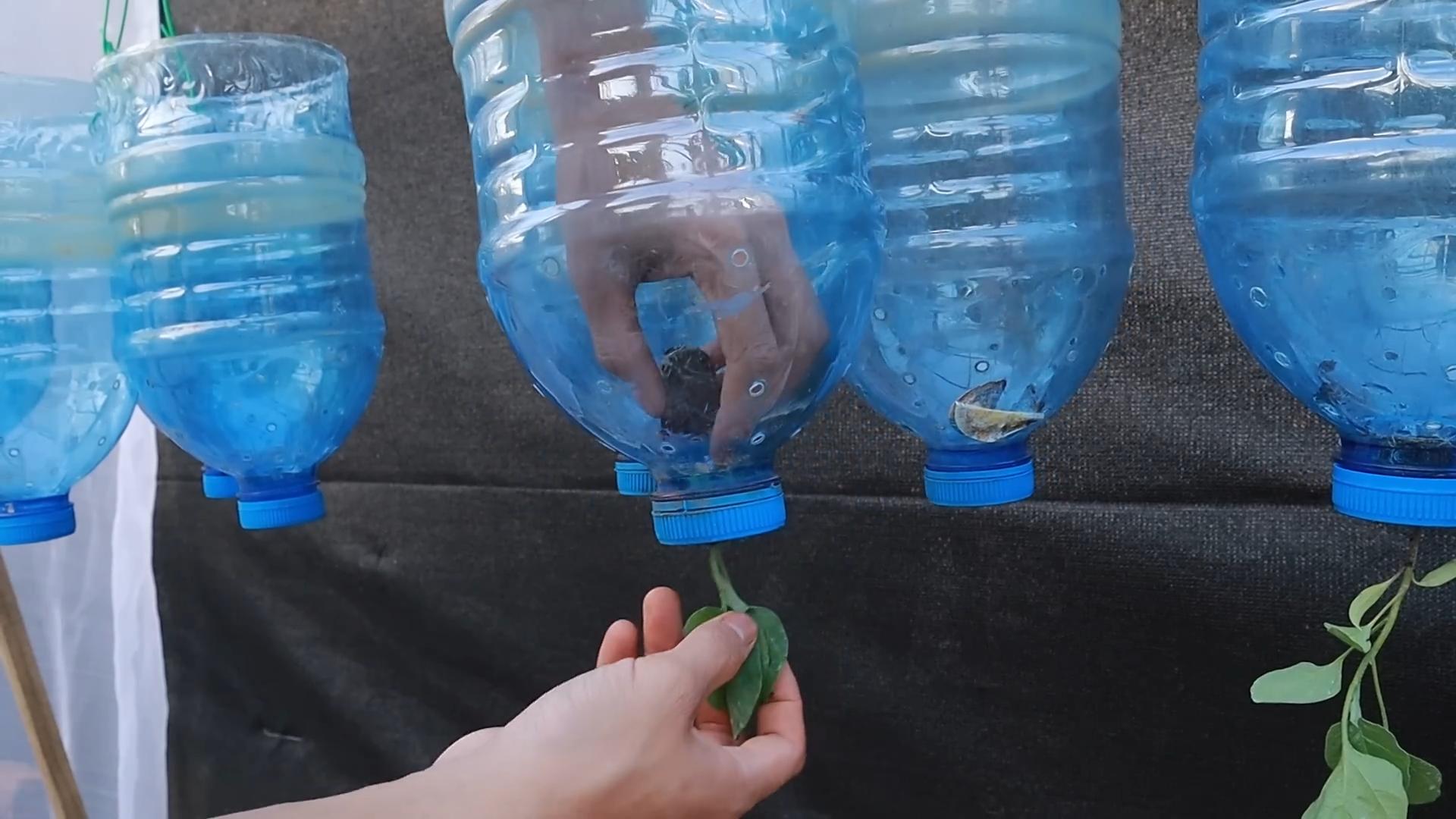
Conclusion
So, there you have it! Growing your own eggplants in pots is not only achievable, but it’s also incredibly rewarding. We’ve walked you through the process, from selecting the right pot and soil to nurturing your seedlings and harvesting those beautiful, glossy fruits. But why should you bother with this DIY project?
Simply put, the taste of a homegrown eggplant, bursting with freshness and free from the chemicals often found in commercially grown produce, is unparalleled. It’s a flavor explosion that will elevate your favorite eggplant dishes to a whole new level. Plus, there’s an undeniable satisfaction in knowing you cultivated something delicious with your own two hands.
This pot method offers several advantages, especially for those with limited garden space. It allows you to control the growing environment more effectively, protecting your plants from pests and diseases. You can also easily move your pots to chase the sun or shelter them from harsh weather.
But the beauty of this method lies in its adaptability. Feel free to experiment with different eggplant varieties. Try growing smaller, more compact varieties like ‘Fairy Tale’ or ‘Hansel’ if you’re particularly short on space. Or, if you’re feeling adventurous, explore heirloom varieties with unique colors and flavors.
Consider companion planting in your pots as well. Basil, marigolds, and thyme are excellent choices that can deter pests and attract beneficial insects. A sprinkle of Epsom salts every few weeks can also provide your eggplants with a boost of magnesium, promoting healthy growth and abundant fruit production.
Don’t be afraid to tweak the watering schedule based on your local climate and the specific needs of your plants. Remember to check the soil moisture regularly and adjust accordingly. Overwatering can be just as detrimental as underwatering.
The key to successful eggplant cultivation, especially in pots, is consistent care and attention. Regularly inspect your plants for signs of pests or diseases, and address any issues promptly. A little bit of preventative maintenance can go a long way in ensuring a bountiful harvest.
Ultimately, this DIY homegrown eggplant pot method is a must-try for anyone who loves fresh, flavorful produce and enjoys the satisfaction of gardening. It’s a relatively simple and accessible project that can yield impressive results, even for beginner gardeners.
We encourage you to give it a try and experience the joy of harvesting your own delicious eggplants. And most importantly, we want to hear about your experiences! Share your tips, tricks, and photos with us in the comments below. Let’s create a community of eggplant enthusiasts and learn from each other. What variety did you choose? What challenges did you face, and how did you overcome them? Your insights could be invaluable to other aspiring eggplant growers. So, get your hands dirty, embrace the process, and enjoy the fruits (or rather, vegetables) of your labor! This is your chance to master the art of homegrown eggplant cultivation.
Frequently Asked Questions (FAQ)
What is the best size pot for growing eggplants?
A pot that is at least 5 gallons in size is recommended for growing eggplants. However, a 10-gallon pot or larger is even better, as it provides more room for the roots to grow and allows the plant to access more nutrients and water. The larger the pot, the less frequently you’ll need to water and fertilize. Ensure the pot has adequate drainage holes to prevent waterlogging, which can lead to root rot. Consider using a fabric pot, as these allow for better aeration and drainage compared to plastic pots.
What type of soil should I use for growing eggplants in pots?
Eggplants thrive in well-draining, nutrient-rich soil. A good potting mix specifically formulated for vegetables is ideal. You can also create your own mix by combining equal parts of compost, peat moss (or coconut coir), and perlite or vermiculite. Compost provides essential nutrients, peat moss (or coconut coir) helps retain moisture, and perlite or vermiculite improves drainage. Avoid using garden soil in pots, as it can become compacted and doesn’t drain well. Adding a slow-release fertilizer to the potting mix at planting time can provide a steady supply of nutrients throughout the growing season.
How often should I water my eggplant plants in pots?
Watering frequency depends on several factors, including the size of the pot, the weather, and the stage of growth. Generally, you should water your eggplant plants when the top inch of soil feels dry to the touch. During hot, dry weather, you may need to water daily. Avoid overwatering, as this can lead to root rot. Water deeply, allowing the water to drain out of the bottom of the pot. Mulching around the base of the plant can help retain moisture and reduce the need for frequent watering.
How much sunlight do eggplants need?
Eggplants require at least 6-8 hours of direct sunlight per day to thrive. Choose a sunny location for your pots where the plants will receive ample sunlight. If you live in a particularly hot climate, providing some afternoon shade can help prevent the plants from overheating. If you’re growing eggplants indoors, you may need to supplement with grow lights to ensure they receive enough light. Rotate the pots regularly to ensure all sides of the plant receive equal sunlight.
How often should I fertilize my eggplant plants in pots?
Eggplants are heavy feeders and require regular fertilization to produce abundant fruit. Start fertilizing about two weeks after transplanting the seedlings into the pots. Use a balanced fertilizer (e.g., 10-10-10) diluted to half strength every two weeks. Once the plants start flowering and fruiting, switch to a fertilizer that is higher in phosphorus and potassium (e.g., 5-10-10) to promote fruit development. You can also supplement with organic fertilizers like compost tea or fish emulsion. Avoid over-fertilizing, as this can lead to excessive foliage growth at the expense of fruit production.
What are some common pests and diseases that affect eggplants, and how can I prevent them?
Common pests that affect eggplants include aphids, flea beetles, spider mites, and whiteflies. Diseases include fungal diseases like early blight, verticillium wilt, and powdery mildew. To prevent pests and diseases, start with healthy seedlings and use well-draining soil. Regularly inspect your plants for signs of infestation or disease. Handpick pests or use insecticidal soap or neem oil to control them. Ensure good air circulation around the plants to prevent fungal diseases. Remove any infected leaves or plants promptly. Consider using companion planting to deter pests and attract beneficial insects.
How do I know when my eggplants are ready to harvest?
Eggplants are typically ready to harvest when they are glossy, firm, and have reached their mature size and color. The skin should be smooth and unblemished. Gently press the skin with your thumb; if it leaves a slight indentation, the eggplant is ripe. Overripe eggplants will become dull, soft, and bitter. Use a sharp knife or pruning shears to cut the eggplant from the plant, leaving a short stem attached. Harvest regularly to encourage continued fruit production.
Can I grow eggplants indoors?
Yes, you can grow eggplants indoors, but it requires providing them with the right conditions. Ensure they receive at least 6-8 hours of direct sunlight or supplement with grow lights. Use a large pot with well-draining soil and fertilize regularly. Hand-pollinate the flowers by gently shaking the plant or using a small brush to transfer pollen from one flower to another. Monitor for pests and diseases and address any issues promptly. Indoor-grown eggplants may not produce as much fruit as those grown outdoors, but you can still enjoy a small harvest.
What are some good companion plants for eggplants?
Good companion plants for eggplants include basil, marigolds, thyme, oregano, peppers, and tomatoes. Basil repels many common eggplant pests, while marigolds attract beneficial insects. Thyme and oregano can help deter flea beetles. Peppers and tomatoes are in the same family as eggplants and can benefit from similar growing conditions. Avoid planting eggplants near fennel, as it can inhibit their growth.
How can I improve the flavor of my homegrown eggplants?
To improve the flavor of your homegrown eggplants, harvest them when they are young and tender. Overripe eggplants can become bitter. Soaking sliced eggplants in salted water for about 30 minutes before cooking can help draw out any bitterness. Grilling, roasting, or frying eggplants can also enhance their flavor. Experiment with different recipes and seasonings to find your favorite way to enjoy your homegrown eggplants.

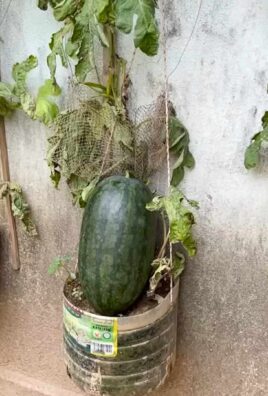
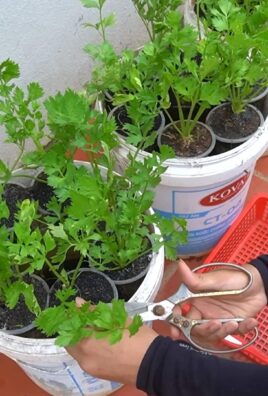
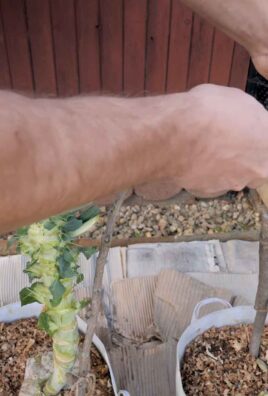
Leave a Comment